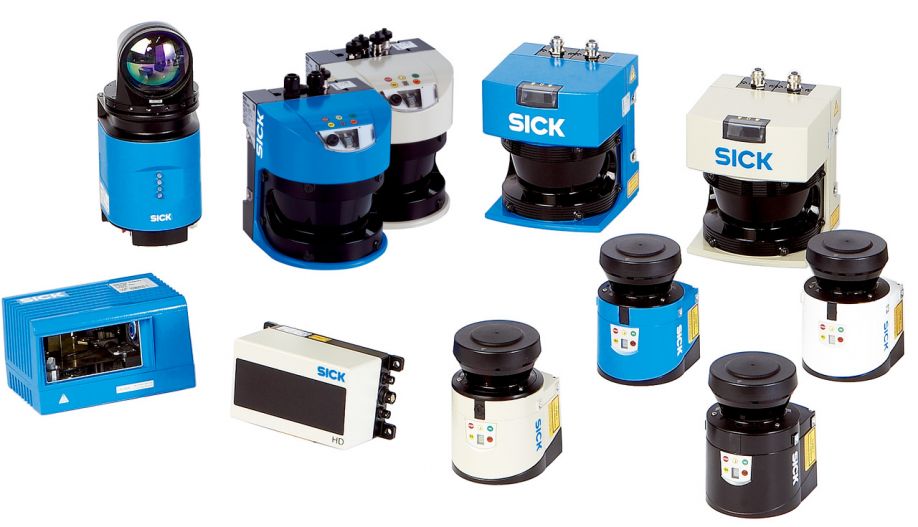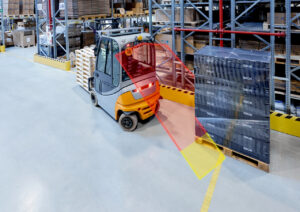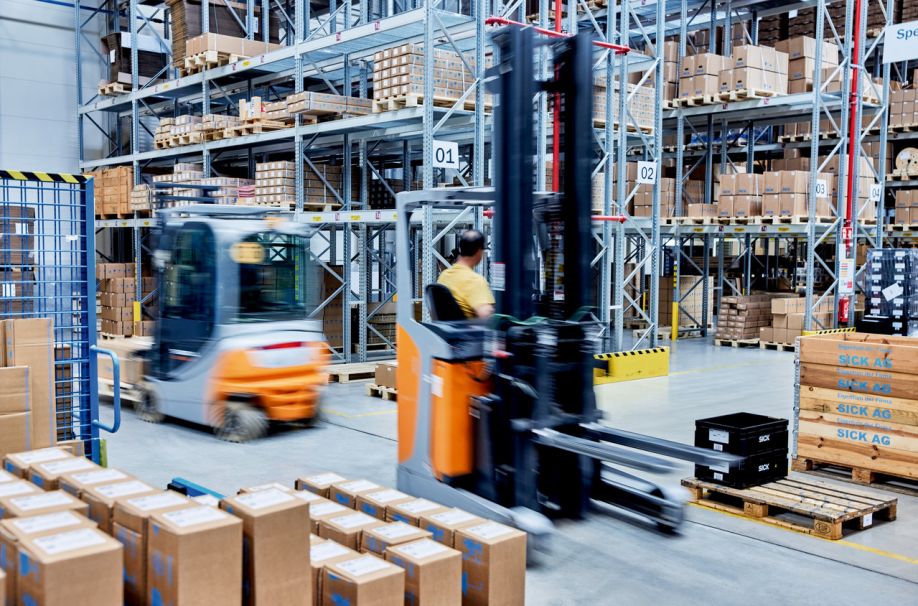One of the key elements to consider when selecting LiDAR technology is whether you need safe LiDAR or LiDAR. But what makes LiDAR safe? And when do you need a safety-rated device? Well, look no further, we’ve got the answers for you right here!
What Are The Differences Between Safe LiDAR and LiDAR?
Article from | SICK, Inc.
Do you know when to use safe LiDAR or LiDAR? Check out this blog to learn more!
As LiDAR becomes one of the leading technologies in the industry, it is important to understand all that goes into it. Between determining what type is right for your application and the numerous options available, it can feel overwhelming to make a choice.
But one of the key elements to consider when selecting LiDAR technology is whether you need safe LiDAR or LiDAR. But what makes LiDAR safe? And when do you need a safety-rated device? Well, look no further, we’ve got the answers for you right here!
What is LiDAR?
First, let’s tackle a basic definition. LiDAR is an acronym, standing for LIght Detection And Ranging. It operates on the time-of-flight concept, which is a very well tested concept in industry. We know the speed of light through our atmosphere so that means we can send a pulse of light, bounce it off a target, and measure the amount of time it takes to come back. By halving the total time and multiplying by the speed of light, we know the distance to the target. This is the core of how LiDAR works. Check out our blog post on the history of LiDAR to learn more!
Safety laser scanners are devices used in various industries and applications to monitor and ensure the safety of people and machines. These devices use LiDAR technology with a laser that “scans” an area and when a person or object is detected, a signal is sent to stop the nearby machine or hazard.
What makes LiDAR safe?
But what makes these devices safe? Well, safety laser scanners are specifically designed with safety in mind. Here are three elements that make LiDAR safe.
1. Meeting Safety Standards
A safety laser scanner is considered safe when it meets certain criteria and adheres to specific standards and regulations, such as ISO 13849 and IEC 61496. These standards outline the requirements for safety-related parts of control systems, including the design and performance of safety laser scanners.
Through these standards, performance levels of the devices are determined. Safety laser scanners are categorized according to performance level, which is determined by the level of safety provided. The performance level is assigned based on factors such as the reliability of the scanner, its response time, and the ability to detect objects accurately.
2. Defined Safety Zones
Safety laser scanners define specific safety zones or protected areas where human presence is not allowed or where machine operation must be modified to prevent hazards. The scanner should accurately detect and monitor these zones, ensuring that safety measures are triggered if any unauthorized entry or intrusion occurs.
They also have a fast response time, typically in the range of milliseconds. This allows them to quickly detect and respond to any safety breaches or potential hazards in real-time. They can trigger appropriate safety measures, such as stopping or slowing down machinery, activating warning signals, or initiating emergency shutdown procedures.
3. Testing and Validation
Safety laser scanners undergo rigorous testing and validation to ensure safety and performance. This includes tests for factors like fault tolerance, resilience to environmental conditions, and adherence to safety standards. Certified safety laser scanners should have documentation, such as a Declaration of Conformity, indicating that they have undergone the necessary testing and meet the specified safety requirements.
Safety LiDAR vs LiDAR- Which Type of LiDAR is Right for Your Application
When selecting LiDAR sensors, it is important to consider safety ratings, especially for applications involving potential risks to humans. Both safe and non-safe LiDAR are valuable for the manufacturing industry, but you may not always need to use safety-rated sensors. And sometimes certain applications may require safety-rated LiDAR that you may not expect. It’s important to stay informed and understand when you should use either type . This is almost always done through risk assessments. SICK offers safety services to conduct comprehensive risk assessments.
Safety-Rated LiDAR
Safety-rated sensors are used indoors and outdoors in manufacturing. Safe LiDAR is often used in mobile and stationary settings, such as applications where there may be significant human interaction with the machine, device, or robot.
Safety-rated sensors comply with norms and standards set by organizations such as the International Electrotechnical Commission (IEC) and The American National Standard Institute (ANSI). The IEC 61496 standard establishes criteria for Electro-Sensitive Protective Equipment (ESPE) construction and testing. ESPE levels are determined based on the associated machinery or process risk within the industry. Similarly, the Safety Integrity Level 2 (SIL2), or ISO 13849-1 standard, specifies the functional safety of LiDAR sensors. SICK offers numerous safety laser scanner options, but two of them are the microScan3 and the nanoScan3.
The microScan3 is built for the protection of stationary and mobile applications, from simple to complex. With its innovative safeHDDM™ scanning technology, it is highly resistant to dirt, dust, and ambient light. In addition, it is highly practical as it is not affected by additional laser scanners or other infrared sources. With the ability to simultaneously monitor up to 8 protective fields, it also performs well in applications requiring simultaneous protection of several hazardous areas.
The nanoScan3 is one of the smallest profile safety laser scanner on the market. Its space-saving design works perfectly in mobile robotics applications, but also in stationary applications where space is limited. It delivers high-precision measurement data and is extremely resistant to light, dust, or dirt. It also has the highest level of flexibility with up to 128 freely configurable fields and monitoring cases.
LiDAR
In applications with reduced human involvement, non-safety-rated sensors can be considered. These are also used indoors and outdoors in manufacturing, and although these sensors possess similar capabilities to safety-rated devices, they do not meet safety standards to qualify them as a safety laser scanner. While not considered safety-rated, that does not make these devices unnecessary or dangerous to use.
LiDAR sensors are commonly employed in conventional industrial control systems. These sensors provide the advantage of non-contact detection of actual values at the output of the work process, utilizing the measurement element. Non-safe LiDAR measures in 1D, 2D, and 3D.
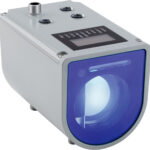 1D LiDAR
1D LiDAR
Linear measurement sensors are 1D distance sensors, such as the Dx1000. They scan in a linear, one-dimensional direction toward the measuring object. This enables them to detect distances and changes in distance to defined targets (with up to 100% remission) or reflectors. Linear measurement sensors can be used to position objects such as large cranes at an accurate distance, enabling them to perform gripping and unloading processes.
2D LiDAR
To maintain the excellent measurement capabilities provided by laser systems and apply them to surface measurements, 2D LiDAR was developed. These sensors utilize a method involving a laser beam being directed across a rotating mirror, which may seem simple at first glance but requires attention to detail.
Many scanning sensors are designed as coaxial measuring systems, with the emitted beam at the center of the received beam. In this setup, a rotating mirror is used to deflect the beam. All the exceptional properties of laser measurements, including the ability to scan over a wide range and measure even dark objects, still apply in this scenario.
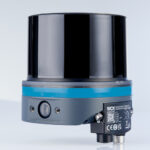
3D LiDAR
To measure space, 3D LiDAR is utilized. When translating the measurement data from a 2D LiDAR sensor into a 3D image, it is necessary to accompany the standard outgoing telegram with the mechanical application point of the sensor in the customer’s chosen coordinate system. The scans are provided with time stamps and indexing to enable the customer to logically create an image of the output scans with accurate times and locations.
The multiScan100 3D LiDAR sensor is a great example of this technology, and of multi-layer LiDAR. The sensor generates a 3D point cloud that can be used to detect people and objects. It effortlessly detects cliffs and overhanging obstacles. This is how it reliably protects mobile robots from accidents and failures. The multiScan100 reliably detects objects, no matter whether they are standing on the ground or projecting into its field of view. This helps it avoid collisions. The sensor always “knows” exactly where a vehicle is.
The content & opinions in this article are the author’s and do not necessarily represent the views of RoboticsTomorrow
Comments (0)
This post does not have any comments. Be the first to leave a comment below.
Featured Product


